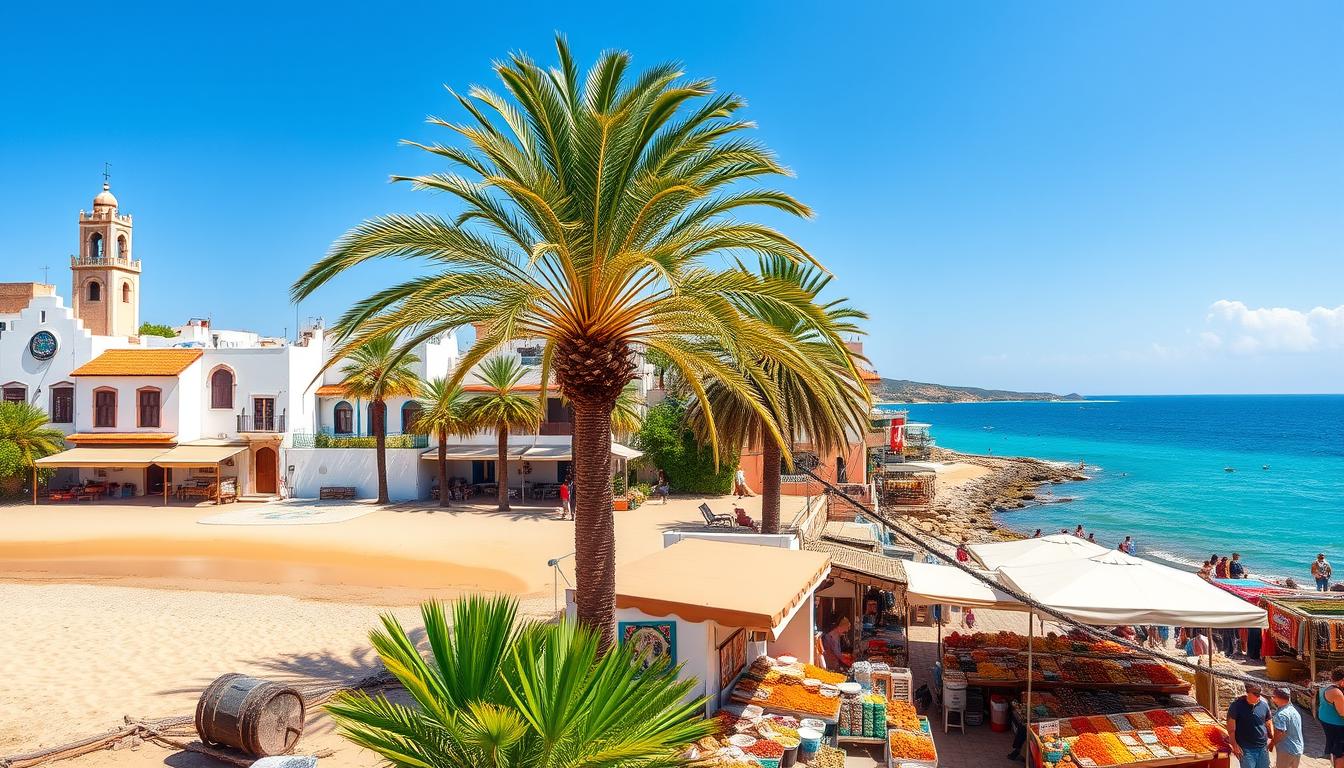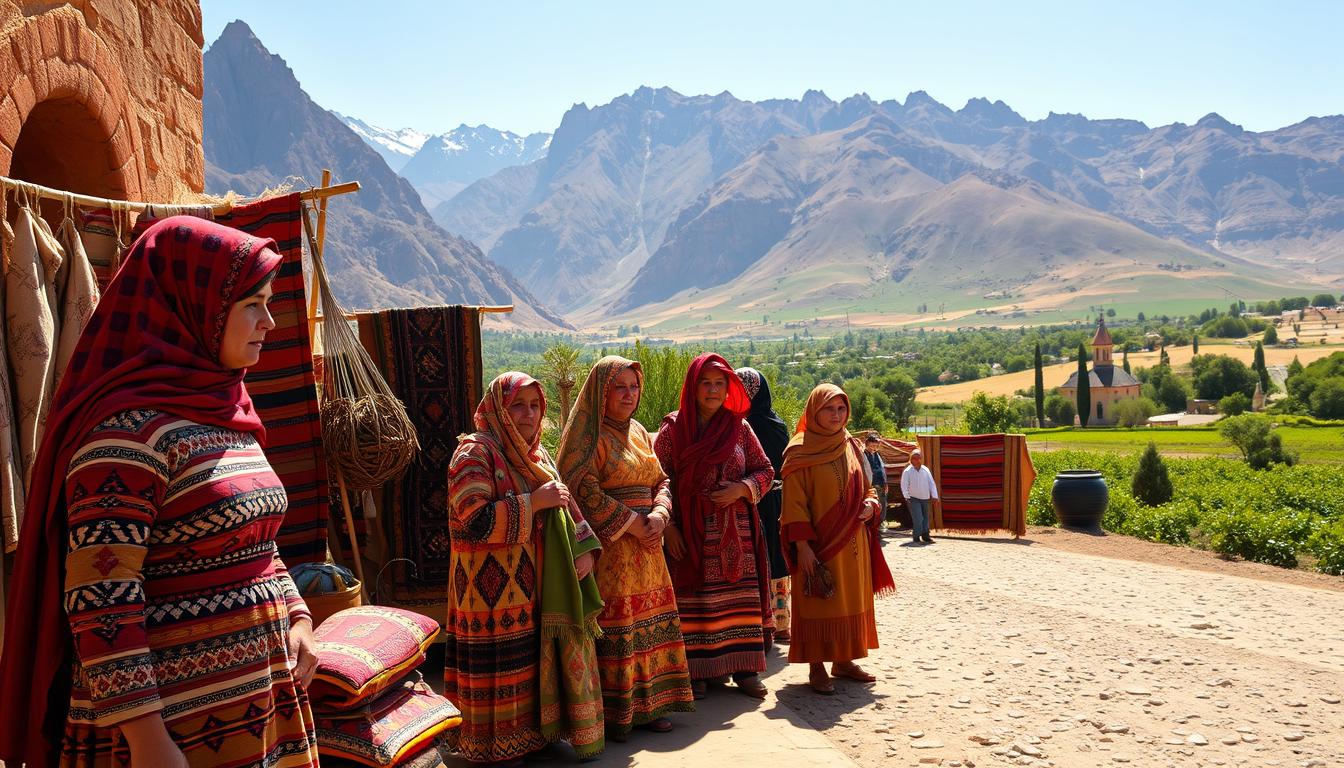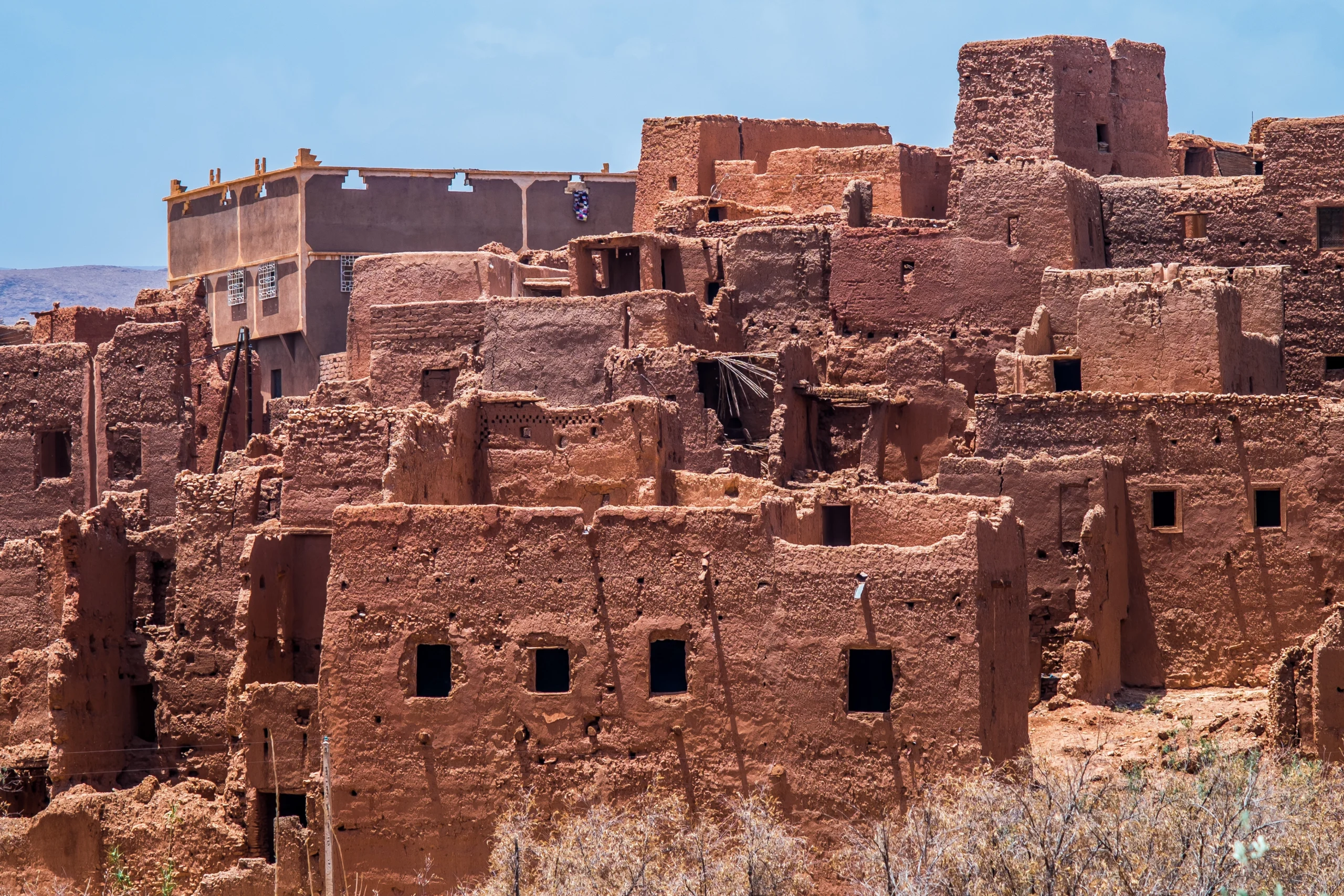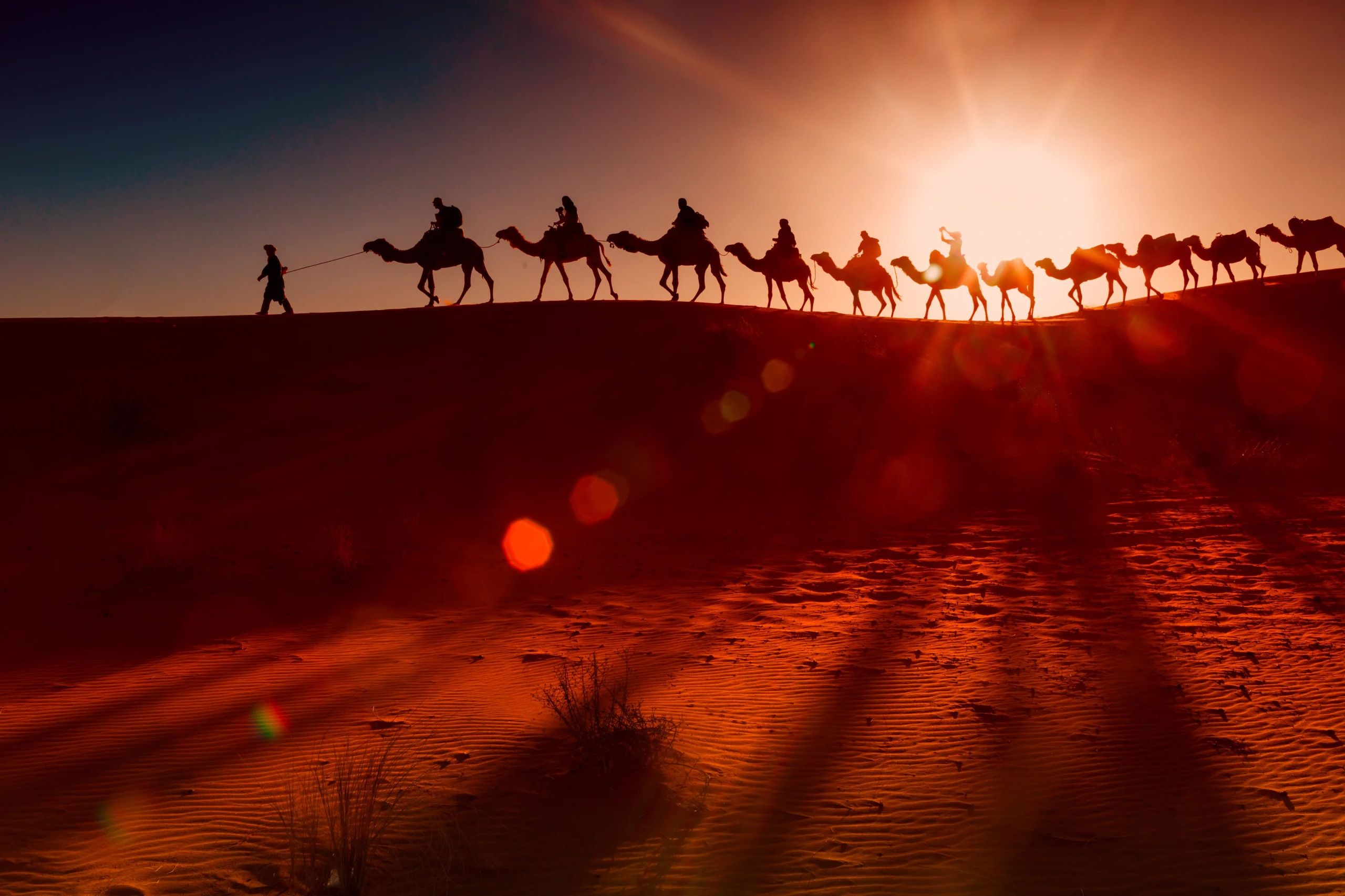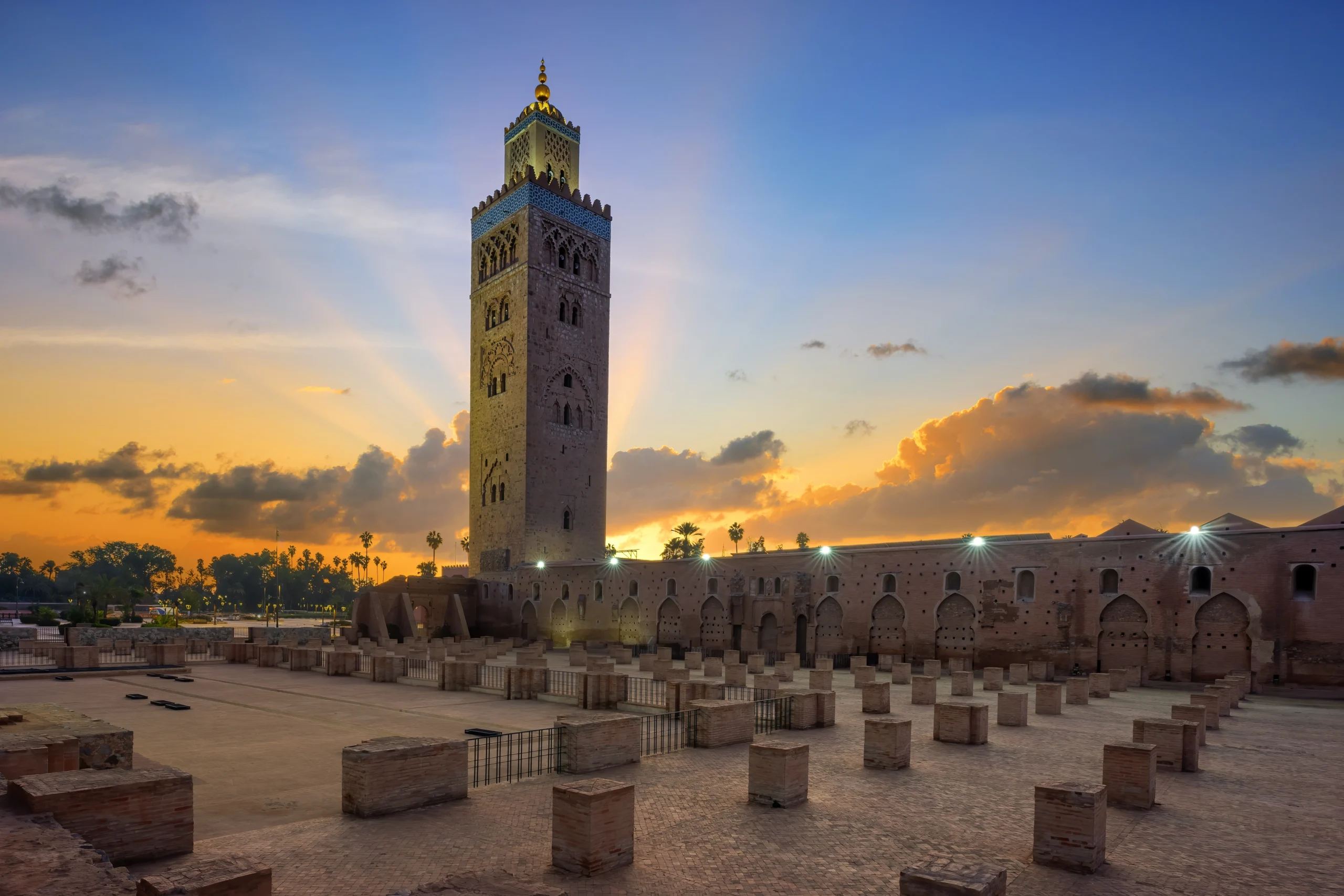When I first stepped onto the sun-drenched streets between Spain and Morocco, I knew this trip would change my view of travel. These Mediterranean countries are more than close neighbors. They are a stunning mix of cultures, histories, and experiences ready to be found.
Picture yourself moving from Spain’s lively streets to Morocco’s magical lands. Every spot here has a story of connection and contrast. Spain and Morocco share a deep history that calls out to those who love to explore.
Your journey through these amazing places will reveal hidden gems. From Marrakech’s lively markets to Barcelona’s stunning buildings. Each step invites you to dive into the essence of two incredible cultures.
Key Takeaways
- Discover the unique cultural blend of Spain and Morocco
- Experience seamless travel between Mediterranean countries
- Uncover deep historical connections between Iberia and Morocco
- Explore diverse landscapes and architectural marvels
- Immerse yourself in rich traditions and local experiences
An Overview of Spain and Morocco’s Historical Ties
The story of Spain and Morocco’s relations is filled with centuries of cultural exchange and complex politics. It’s a tale of deep connections between these two countries. Let’s explore their shared history.
Spanish and Moroccan ties go back to medieval times. Geography, conquest, and cultural exchanges have shaped their relationship. These North African countries have a strong bond that affects their modern ties.
The Influence of Moorish Culture
The Moorish period brought Islamic culture to the Iberian Peninsula. This era of history is full of architectural and cultural wonders:
- The Alhambra in Granada shows Moorish architectural skill
- Arabic words are part of Spanish language
- Designs like horseshoe arches inspire today’s architecture
Colonial History and Its Impact
Spain and Morocco’s relationship has seen both conflict and cooperation. Spain’s colonial rule in Morocco from the late 19th to early 20th century has had a lasting impact on their diplomacy.
| Period | Key Developments |
|---|---|
| 1884-1956 | Spanish Protectorate in Morocco |
| 1956 | Moroccan Independence |
Modern-Day Relations
Today, Spain and Morocco have a complex but cooperative relationship. They work together on trade, tourism, and Mediterranean issues. Their shared interests keep them connected.
“The history between Spain and Morocco is not just about borders, but about shared human experiences.” – Contemporary Historian
Preparing for Your Journey from Spain to Morocco
Planning a trip from Spain to Morocco needs careful thought. Your adventure requires planning for timing, documents, and money. This journey connects two lively places, ready to be explored.
Best Times to Visit
Choosing the right time to travel makes a big difference. Here are the best times to go:
- Spring (March-May): Mild weather and fewer people
- Autumn (September-November): Nice weather and festivals
- Don’t go in summer (June-August) because it’s too hot in Morocco
Essential Travel Documents
You’ll need certain documents to travel from Spain to Morocco. Here’s what you should have:
- A valid passport (good for at least six months after your trip)
- A Schengen visa or the right tourist permit
- Proof you have a return ticket
- Travel insurance papers
Currency Exchange Tips
Handling money in the Gibraltar Strait can be hard. Here are some tips:
- Carry euros and dirhams for easy spending
- Use bank cards with low fees for international use
- Exchange money at official banks or trusted places
- Tell your bank you’re traveling abroad
“Preparation is the key to a seamless travel experience between Spain and Morocco.” – Travel Experts
Knowing these steps helps you prepare for a great trip from Spain to Morocco. You’ll have unforgettable memories and smooth travel.
Must-See Destinations in Spain
Spain is a journey through different landscapes and vibrant cultures. You’ll see unique cities, rich cultural experiences, and stunning views. These all show the heart of Spanish heritage.
When planning your trip, some places really stand out. They have amazing characters and attractions.
Vibrant Cities: Barcelona and Madrid
Barcelona and Madrid are the heart of Spain. Each city offers something special for visitors:
- Barcelona: A coastal gem with stunning Gaudí architecture
- Madrid: The royal capital with world-class museums
The Andalusian Charm of Seville
Seville is the soul of southern Spain. It mixes cultures in a mesmerizing way. The city’s Moorish buildings and flamenco traditions are unforgettable.
“Seville is a dream of color, music, and history” – Spanish Travel Guide
Exploring the Basque Country
The Basque Country is a unique place. It has its own language, food, and traditions. Bilbao, for example, offers modern art and keeps its roots.
| Region | Key Attractions | Cultural Highlight |
|---|---|---|
| Barcelona | Sagrada Familia, Gothic Quarter | Modernist Architecture |
| Madrid | Prado Museum, Royal Palace | Spanish Royal History |
| Seville | Real Alcázar, Plaza de España | Moorish Influences |
| Basque Country | Guggenheim Museum, San Sebastian | Unique Regional Identity |
Every place in Spain shows a part of its rich culture. It invites you to explore the most exciting experiences in the Mediterranean.
Top Moroccan Cities to Discover
Morocco is a treasure trove of history, culture, and stunning landscapes. Your trip will take you through cities that are full of life and beauty. These places will capture your heart and show you the true spirit of Morocco.
Every city in Morocco has its own story to tell. You’ll find ancient medinas and coastal towns, each with its own charm. These cities show the amazing diversity of Morocco.
The Rich Heritage of Marrakech
Marrakech is a vibrant city where old traditions meet modern life. The famous medina is alive with energy. It offers a deep dive into Moroccan culture.
- Explore the historic Jemaa el-Fnaa square
- Wander through colorful souks
- Discover intricately designed Islamic architecture
The Coastal Beauty of Essaouira
Essaouira is a peaceful coastal town on Morocco’s Atlantic coast. It’s known for its wind-swept beaches and whitewashed buildings. Artists and travelers love it here for its beauty.
| City Feature | Unique Attraction |
|---|---|
| Medina | UNESCO World Heritage Site |
| Coastline | Ideal for windsurfing |
| Architecture | Portuguese-influenced design |
Discovering Fes: The Spiritual Capital
Fes is Morocco’s spiritual and cultural heart. It’s filled with ancient madrasas and traditional tanneries. These places give a peek into Morocco’s rich history.
“Fes is not just a city, it’s a living museum of Moroccan civilization.” – Moroccan Travel Guide
Exploring these cities will give you a deep understanding of Morocco. You’ll see why it’s a favorite among travelers from all over the world.
Cultural Experiences: Spain and Morocco
Exploring Iberia and Morocco shows a rich mix of shared and unique traditions. The berber spain ties have deeply influenced both areas. This creates a captivating blend of cultures for travelers.
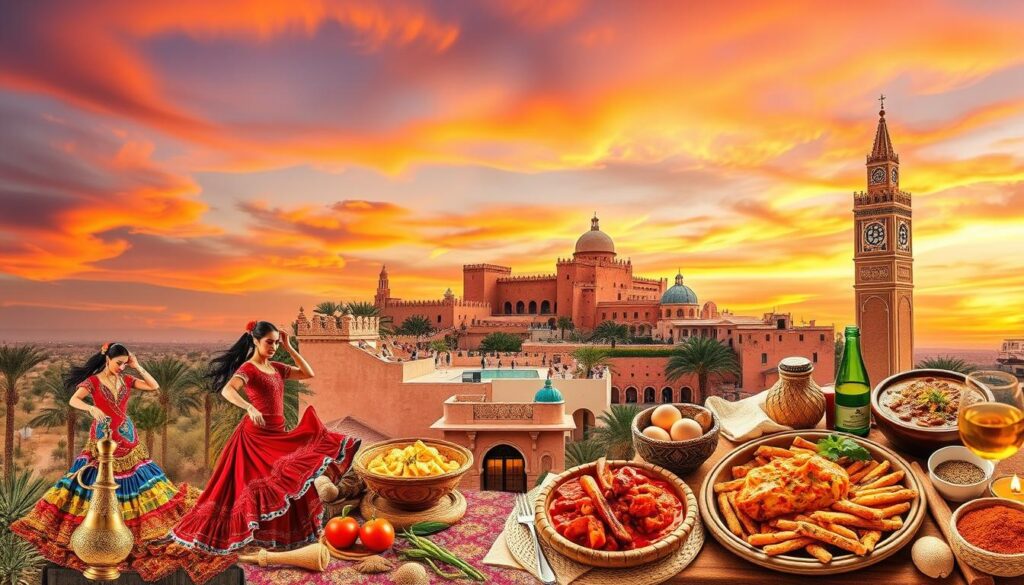
Culinary Journeys: Tapas and Moroccan Flavors
Your food adventure will take you through two amazing culinary worlds. Spanish tapas offer a social dining experience with small plates. Moroccan cuisine, on the other hand, brings aromatic dishes that tell stories of ancient trade and family traditions.
- Spanish Tapas Highlights:
- Patatas bravas
- Jamón ibérico
- Gazpacho
- Moroccan Culinary Delights:
- Tagine
- Couscous
- Mint tea
Festivals and Celebrations
The iberia morocco connection shines through lively festivals. Spain’s La Tomatina and Morocco’s Fes Festival of World Sacred Music show each culture’s spirit. These celebrations give a peek into local traditions.
“Culture is the art of living – and nowhere is this more evident than in the festivals of Spain and Morocco.” – Travel Enthuasiast
Arts and Crafts Traditions
Berber influences are seen in the art of both regions. Intricate tile work, detailed textiles, and metalcraft show the cultural bond between Spanish and Moroccan artisans. You’ll see how centuries of interaction have created a unique aesthetic that connects continents.
Pro tip: Explore local markets and workshops to truly appreciate the craftsmanship that defines these cultures.
Transportation Options Between Spain and Morocco
Traveling between Spain and Morocco is exciting, with many transportation choices. Whether you’re going for a quick trip or a long adventure, knowing your options is key for a smooth journey.
Ferry Connections Across the Gibraltar Strait
The ferry from Algeciras to Tangier is the top choice for crossing the Gibraltar Strait. You can enjoy:
- Frequent daily departures
- Comfortable passenger ferries
- Travel times around 1-1.5 hours
“Crossing the Gibraltar Strait by ferry offers breathtaking views of two continents meeting.” – Mediterranean Travel Expert
Flight Options and Travel Times
Many airlines offer direct flights between Spain and Morocco’s major cities. Key routes include:
- Madrid to Casablanca
- Barcelona to Marrakech
- Málaga to Tangier
Flights take about 1-2 hours, making them a fast option compared to ferries.
Navigating Local Transportation in Morocco
In Morocco, you’ll find many ways to get around. Trains link big cities well, and grand taxis and buses are cheap for longer trips. In cities like Marrakech and Casablanca, petit taxis are great for local travel.
Pro tip: Get a local SIM card to help find your way around during your Spain and Morocco trip.
Customs and Etiquette: What to Know
Exploring Spanish and Moroccan Mediterranean countries needs care and respect. Knowing local customs and norms is key. Plan your trip well to avoid misunderstandings and make lasting connections.
Being Respectful in Moroccan Culture
Moroccan culture values tradition deeply. Here are some important etiquette tips:
- Dress modestly, covering shoulders and knees
- Ask permission before photographing people
- Use your right hand for eating and greeting
- Remove shoes when entering homes
Spanish Social Etiquette
Spanish culture is all about warmth and connection. Key practices include:
- Greeting with two kisses (one on each cheek)
- Embracing late dining hours
- Respecting afternoon siesta times
- Engaging in relaxed, lengthy conversations
Language Tips for Travelers
Knowing basic phrases can greatly improve your trip. Here are some essential words:
| Language | Greeting | Thank You |
|---|---|---|
| Arabic | Marhaba | Shukran |
| Spanish | Hola | Gracias |
| Berber | Azul | Tanmirt |
“Respect is the key that opens doors to understanding between cultures.”
Exploring Moroccan Markets and Souks
Stepping into a Moroccan souk is like entering a world full of colors, sounds, and smells. These markets are the heart of commerce in north African countries. They give travelers a real look at Morocco’s rich culture.
Exploring these markets is a sensory adventure. The narrow alleys are filled with vendors selling everything from beautiful handicrafts to fragrant spices.
What to Expect in a Moroccan Souk
- Crowded, maze-like marketplace layouts
- Diverse range of traditional and modern goods
- Intense negotiations and social interactions
- Overwhelming array of colors and textures
Tips for Bargaining Successfully
Bargaining is an art in Moroccan markets. Start by:
- Showing polite interest without immediate commitment
- Asking the initial price but offer much lower
- Being ready to walk away
- Keeping a friendly, respectful attitude
Unique Souvenirs to Bring Home
| Souvenir Type | Estimated Price Range | Best Market Location |
|---|---|---|
| Handwoven Berber Carpet | $100 – $500 | Marrakech Souks |
| Moroccan Leather Goods | $30 – $200 | Fez Medina |
| Argan Oil | $10 – $50 | Essaouira Markets |
“In the souks, every purchase tells a story of craftsmanship and tradition.” – Moroccan Artisan Proverb
Shopping in a Moroccan souk is more than buying things. It’s a deep dive into culture and tradition.
Spanish Architecture and Its Moroccan Influence
Spain’s architecture tells a story of cultural mix, thanks to the moors in spain’s history. Exploring the Iberian Peninsula, you’ll see a blend of styles. This blend shows the long history of Moroccan Spanish ties.
The Moorish touch changed Spanish buildings, adding unique touches. These touches amaze both travelers and history buffs.
Unique Moorish Architectural Elements
- Intricate geometric patterns
- Ornate arabesques
- Decorative tile work
- Horseshoe arches
- Elaborate courtyards
Key Landmarks to Explore
Don’t miss these amazing sites on your architectural tour of Spain:
| Landmark | Location | Architectural Significance |
|---|---|---|
| Alhambra Palace | Granada | Pinnacle of Moorish architectural design |
| Mezquita of Cordoba | Cordoba | Stunning mosque-cathedral showing Islamic styles |
| Alcázar of Seville | Seville | Royal palace with beautiful Moorish work |
Architectural Styles in Morocco
Moroccan architecture is a big inspiration, showing the deep bond between these cultures. From Marrakech’s medinas to coastal fortresses, each building has its own story of art and culture.
“Architecture is a visual history book, telling stories of conquest, culture, and connection.” – Anonymous Historian
Visiting these sites, you’ll understand how design crosses borders. It shows the shared cultural heritage of these places.
Understanding the Culinary Landscape
Start a delicious journey through Iberia and Morocco’s tasty traditions. These Mediterranean countries share a rich food history. Their dishes tell tales of cultural mix, spices, and long histories together.
Traditional Spanish Dishes to Savor
Spanish food is full of flavors that show off the country’s diverse regions. You’ll love these famous dishes:
- Paella: A saffron-infused rice dish from Valencia
- Gazpacho: A cool soup for hot summer days
- Tortilla Española: A classic potato and egg omelet
- Jamón Ibérico: Top-notch cured ham that shows Spanish food at its best
Moroccan Culinary Highlights
Moroccan food is a burst of flavors that show the country’s varied cultures. Your taste buds will enjoy:
- Tagine: Slow-cooked stews with aromatic spices
- Couscous: A staple grain dish with veggies and meat
- Pastilla: A sweet and savory pastry
- Mint tea: A traditional welcome drink
Fusion Cuisine: Where Cultures Meet
The food traditions of Iberia and Morocco blend in a fascinating way. Spices, cooking methods, and ingredients mix to create special dishes. These dishes tell the story of cultural exchange.
“Food is the universal language that connects people across borders and generations.” – Anonymous Chef
Adventure Activities in Both Countries
Spain and Morocco offer travelers amazing adventure experiences. You’ll see different landscapes, from mountains to deserts and coastlines. Your trip will be filled with exciting activities that you’ll always remember.
Adventure lovers will find Spain and Morocco a paradise. These places offer unique chances to explore amazing terrains through various activities.
Hiking in the Sierra Nevada
The Sierra Nevada mountains in southern Spain are perfect for hiking. Located in Andalusia, they have:
- Trails for all skill levels
- Stunning panoramic views
- Diverse alpine ecosystems
- Opportunities for wildlife photography
Camel Trekking in the Sahara
Morocco’s Sahara Desert offers an extraordinary adventure with its vast golden landscapes. Camel trekking lets you ride like the Berbers did, exploring the desert’s remote areas.
| Desert Trekking Experience | Details |
|---|---|
| Duration | Half-day to multi-day expeditions |
| Difficulty Level | Moderate, suitable for most travelers |
| Best Seasons | September to April |
Water Sports in Tarifa and Essaouira
Tarifa in Spain and Essaouira in Morocco are famous for water sports. Wind and kitesurfing fans will love the top-notch conditions here.
“The intersection of two continents creates unparalleled adventure opportunities for travelers.” – Travel Experts
Your trip to Spain and Morocco will be full of amazing adventures. You’ll see stunning natural beauty, rich culture, and exciting outdoor activities in these incredible places.
Tips for Traveling Safely
Traveling to Spain and Morocco needs careful planning. Your safety is key in these vibrant places. This guide will help you stay safe and have a great trip.
Staying Healthy on Your Trip
Health is important in Spain and Morocco. The climate and local conditions can affect you. Here are some tips:
- Get recommended vaccinations before travel
- Drink bottled water in Morocco
- Pack a first-aid kit
- Purchase travel health insurance
Avoiding Common Scams
Spain and Morocco have scams targeting tourists. Here’s how to protect yourself:
- Be careful of overly friendly strangers
- Keep valuables secure and hidden
- Avoid showing off expensive items
- Use official taxi services
Staying Connected and Informed
Staying in touch is vital in these countries. Here are some ways to stay connected:
| Communication Method | Spain | Morocco |
|---|---|---|
| Local SIM Card | Easy to purchase | Widely available |
| Wi-Fi Availability | Extensive coverage | Limited in rural areas |
| Emergency Numbers | 112 (General) | 19 (Police) |
“Knowledge and preparation are your best travel companions” – Experienced Traveler
Remember, a well-informed traveler is a safe traveler. Stay aware, respectful, and adaptable during your Spanish and Moroccan adventure.
Accommodations: Where to Stay
Planning your trip to Spain and Morocco means thinking about where you’ll stay. The north African countries have many places to stay that can make your trip unforgettable.
Choosing the right place to stay is key. You can find everything from fancy riads to cheap hostels. Each option offers a different level of comfort and a chance to experience local culture.
Hotels and Riads in Morocco
Moroccan places to stay give you a real taste of local life. Riads – old houses turned into hotels – are a must-see in Marrakech and Fes.
- Luxury riads with beautiful tile work
- Rooftop terraces with amazing views
- Personal service and old architecture
Unique Lodging Options in Spain
Spain has a wide range of places to stay. Luxury vacation planners suggest checking out paradores. These are old buildings turned into beautiful hotels.
| Accommodation Type | Average Cost per Night | Experience Level |
|---|---|---|
| Paradores | $150-$300 | High-end Cultural |
| Casa Rurales | $80-$150 | Authentic Rural |
| Urban Hotels | $100-$250 | Modern Comfort |
Budget-Friendly Choices
Even on a tight budget, you can find great places to stay. Hostels, guesthouses, and budget hotels are perfect for exploring Spain and Morocco.
“Travel is not about the destination, but the accommodations that make the journey memorable.” – Unknown Traveler
No matter what you’re looking for, Spain and Morocco have it. Whether you want luxury or something more affordable, there’s something for everyone.
The Environment: Nature in Spain and Morocco
The Mediterranean countries of Iberia and Morocco have amazing natural landscapes. These landscapes attract both travelers and conservationists. You can see rugged mountains and clean coastlines, showing off the area’s unique wildlife.
National Parks and Conservation Areas
Spain and Morocco have a strong focus on protecting their nature. They have many national parks and conservation areas. These places show off the rich ecosystems of these Mediterranean countries.
- Doñana National Park in Spain: A UNESCO World Heritage site
- Toubkal National Park in Morocco: Home to the highest peak in North Africa
- Sierra Nevada National Park: Featuring unique alpine ecosystems
Wildlife Encounter Opportunities
The iberia morocco region is great for seeing wildlife. Birdwatchers and nature lovers can find many different animals in their natural habitats.
- Barbary macaques in Morocco’s cedar forests
- Migratory birds in the Strait of Gibraltar
- Endangered Iberian lynx in Spanish wilderness areas
Sustainable Travel Practices
Travelers can help protect the environment while exploring. Here are some tips for sustainable travel:
- Respect local wildlife and maintain safe distances
- Use eco-friendly transportation options
- Support local conservation initiatives
- Choose environmentally conscious accommodations
“Protecting our natural world is not just a responsibility, but an opportunity to connect with the incredible beauty of our planet.” – Environmental Conservation Expert
Understanding Local Customs and Traditions
Exploring the rich tapestry of berber spain ties and spanish moroccan relations shows a fascinating cultural landscape. It goes beyond simple geographical proximity. The connections between these two nations are deep, showing centuries of shared history and mutual influence.
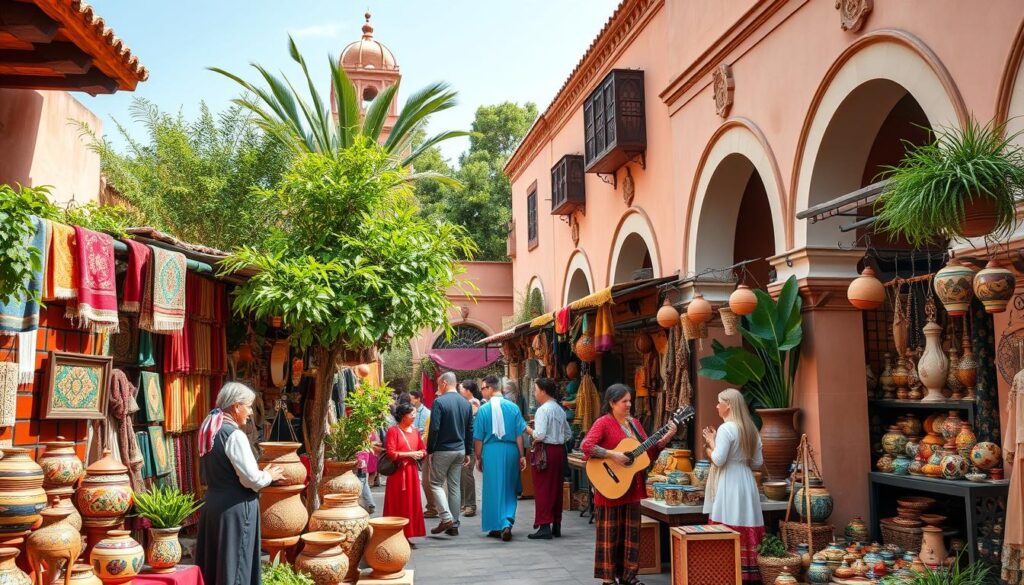
Cultural understanding starts with recognizing the subtle nuances of each society. Your journey through these traditions will help you see the unique qualities of Spanish and Moroccan cultures.
Unique Moroccan Traditions
Moroccan culture is a vibrant mix of influences, showing its rich history. Some distinctive traditions include:
- The sacred ritual of mint tea preparation and serving
- Traditional hammam bathing practices
- Intricate hospitality customs that welcome guests warmly
- Berber textile and craft traditions passed through generations
Spanish Cultural Practices
Spanish culture is full of energy and passion. It is characterized by unique social practices that shape daily life:
- The beloved afternoon siesta tradition
- Passionate commitment to football (soccer)
- Elaborate festival celebrations
- Extended family gatherings and social connections
Common Misconceptions
“Cultural understanding begins with challenging our preconceived notions.”
Travelers often misunderstand the complexity of spanish moroccan relations. Some common misconceptions include:
- Assuming cultural practices are uniform across regions
- Overlooking the nuanced historical connections
- Misinterpreting social etiquette and communication styles
By embracing these insights, you’ll develop a deeper appreciation for the relationship between Spain and Morocco.
Returning Home: Memories to Cherish
Your trip to Spain and Morocco was an amazing adventure. It changed how you see these Mediterranean countries. The memories you made are more than photos—they’re experiences that will inspire you for years.
Photos and mementos are your travel friends. They remind you of the Alhambra’s tiles in Granada or Marrakech’s markets. Make albums, digital galleries, or travel journals to keep these memories alive.
Capturing Your Journey Through Photography
Keep your memories by organizing your photos. Pick the ones that show the best of your trip. Make a digital slideshow or print them to decorate your home.
Keeping Souvenirs and Stories Alive
Real souvenirs like Moroccan textiles or Spanish ceramics bring back your travels. Try cooking recipes you learned, share your stories, and keep exploring these cultures.
Connecting with Fellow Travelers
Join online groups and social media for Spain and Morocco fans. Share your adventures, swap tips, and stay in touch with the world you explored. Your journey continues as a lifelong passion for discovery.
FAQ
What are the best transportation options between Spain and Morocco?
There are several ways to travel between Spain and Morocco. Ferries from Algeciras to Tangier take about 1-1.5 hours. You can also fly from cities like Madrid to Casablanca in 2 hours.
For getting around Morocco, grand taxis, trains, and buses are good. They help you explore different parts of the country.
Do I need a visa to travel between Spain and Morocco?
U.S. citizens usually don’t need a visa for Morocco for up to 90 days. Spain, in the Schengen Area, lets U.S. tourists stay 90 days in 180 days without a visa. Always check travel rules before you go. Make sure your passport is valid for at least six months after your trip.
What is the best time of year to visit Spain and Morocco?
The best time to visit Spain is spring (April-May) and fall (September-October). Morocco is great in spring and autumn. Summer is very hot, and winter can be rainy.
Think about festivals and what you want to do when planning your trip.
How can I handle currency and payments in both countries?
Spain uses the Euro (€), and Morocco uses the Moroccan Dirham (MAD). Credit cards work in big cities and tourist spots. But, you’ll need cash for small places and rural areas.
Exchange money at banks or official places. ATMs are common in cities, and they often have good rates. Tell your bank you’re traveling abroad to avoid card problems.
What are some cultural etiquette tips for traveling in Morocco and Spain?
In Morocco, dress modestly, and ask before taking photos. In Spain, greet with kisses on both cheeks. Tipping is nice but not required.
Learn basic phrases in Spanish and Arabic. Being patient and polite is key to enjoying cultural differences.
Is it safe to travel between Spain and Morocco?
Both countries are safe for tourists. Just be careful and aware of your surroundings. In Morocco, watch out for scams in tourist areas.
Stay informed, have travel insurance, and keep important documents safe. Most travelers have a good time with basic safety steps.
What languages will be most useful during my trip?
Spanish is key in Spain. Arabic and Berber are official in Morocco, with French common in business and tourism. Learning basic phrases in Spanish and Arabic helps a lot.
English is getting more common in tourist spots. But, a translation app or phrasebook can really help with communication and enjoying the culture.

